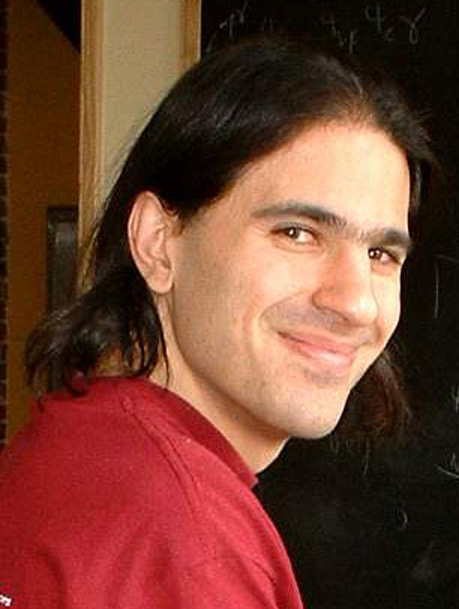|
Rutgers University Department of Physics and Astronomy The 2008 Henry R. and Gladys V. Irons Lecture
|

|
Professor Nima Arkani-Hamed Institute for Advanced Study, Princeton Fundamental Physics in 2010 |
2:00 P.M., Saturday March 1, 2008
Physics Lecture
Hall, Busch Campus, Rutgers University
Background:
Nima Arkani-Hamed was born in Iran, received his undegraduate degree
from Toronto and his PhD from Berkeley. He is one of the most sought after
popular lectures and has appeared on TV in programs like NOVA.
In 2006 he was chosen by Popular Science as one of the "BRILLIANT 10". The magazine's criterion: "We asked for the mavericks. The young guns. The individuals who are changing not just what we know but the limits of what we think it is possible to know".
He and a growing minority of scientists suspect that our universe is just one of untold billions of universes that exist side byside in a cosmic landscape, each with its own laws of physics and its own constants of nature.
Abstract:
With the anticipated turn-on of the Large Hadron Collider (LHC) next
summer, fundamental
physics is on the verge of entering its most exciting era in a
generation. The LHC is
the biggest experiment in history, in all senses of the word. The machine
is a circular ring with a 28 km circumference, in which two beams of protons
are
accelerated in opposite directions, to speeds approaching 0.99999999
times the speed of light. They are then made to collide with each
other,
allowing us to probe the laws of Nature down to distances of 10^(-17)
cm, 1000 times smaller than the
atomic nucleus, 10 times smaller the tiniest distances we have probed
to date. There are strong arguments that dramatic new physical
principles await us at these distances. The LHC could extend our
usual notions of spacetime by detecting supersymmetry or extra
dimensions of space, and could directly produce the particles that
constitute the Dark Matter
of the Universe. In this talk I will describe these ideas, and discuss
the solid things we will have learned to by the early years of the
next decade.
More information:
- Directions and more info, visit http://www.physics.rutgers.edu/irons. Please park in lot 53A if possible.
- For further information, contact
Larry Zamick (lzamick
 physics.rutgers.edu, phone 732-445-3874)
or Scott Thomas (scthomas
physics.rutgers.edu, phone 732-445-3874)
or Scott Thomas (scthomas physics.rutgers.edu, phone 732-445-3984).
physics.rutgers.edu, phone 732-445-3984).